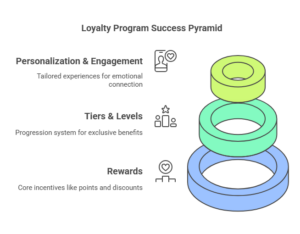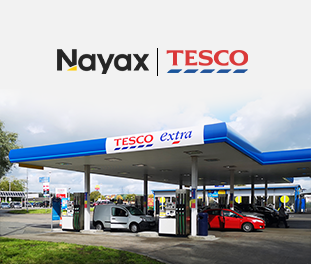A loyalty program is a structured marketing strategy designed by brands to encourage repeat business from customers by offering rewards, incentives, and exclusive benefits. These programs aim to enhance customer retention, increase sales, and foster brand loyalty.
Types of Loyalty Programs
There are various types of loyalty programs to suit different business models and customer preferences. Each has its unique advantages and can be tailored to align with the brand’s goals and customer expectations. They include:
- Points-based programs – the most common – purchases earn customers points that can be redeemed for rewards.
- Cashback programs – a percentage of the purchase amount is offered back to the customer.
- Tiered programs – rewards escalate, based on customer loyalty levels.
- Subscription-based loyalty programs – customers pay a membership fee for exclusive benefits.
Key Components of Loyalty Programs
- Rewards: The core of any loyalty program is the rewards it offers customers. These can take various forms such as points, cashback, discounts, or exclusive offers, and are awarded based on purchasing behavior, such as the amount spent, frequency of purchases, or specific actions like referring friends. The accumulated rewards can then be redeemed for products, services, or special privileges. A well-structured reward system motivates customers to engage more frequently with the brand.
- Tiers and Levels: Many loyalty programs incorporate tiers or levels to create a sense of progression and exclusivity, which encourages continued participation and incentivizes higher spending. As customers accumulate points or meet certain criteria, they advance to higher tiers, for example Silver, Gold, and Platinum, each offering enhanced benefits and rewards, such as faster point accumulation, exclusive access to sales, or personalized services.
- Personalization and Engagement: Effective loyalty programs leverage customer data to provide them with personalized experiences and tailored offers that help build a deeper emotional connection between the customer and the brand. By analyzing purchasing patterns and preferences, businesses can send targeted promotions and recommendations that resonate with individual customers. Additionally, engagement strategies, such as special events, birthday rewards, and gamification elements, keep the program dynamic and interesting.

Benefits of Loyalty Programs
Loyalty programs offer numerous benefits, including:
For brands:
- Increased customer retention by rewarding repeat purchases and fostering a sense of belonging, which often leads to increased lifetime customer value and more stable revenue streams.
- Valuable customer insights that can inform marketing strategies and product development.
For customers:
- Tangible rewards.
- A more personalized shopping experience.
- Enhanced overall satisfaction and loyalty.



